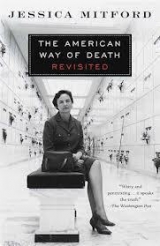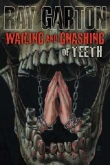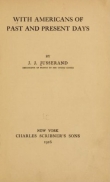
Текст книги "The American Way of Death Revisited"
Автор книги: Jessica Mitford
сообщить о нарушении
Текущая страница: 13 (всего у книги 23 страниц)
13. THE NEWEST PROFESSION
Funeral directors are members of an exalted, almost sacred calling…. [T]he Executive Committee believed that a cut in prices would be suicidal, and notified the manufacturers that better goods, rather than lower prices, were needed…. A $1,000 prize was offered for the best appearing corpse after 60 days…. A resolution was passed requesting the newspapers in reporting the proceedings to refrain from flippancy.
These observations are culled from an 1885 report describing the proceedings of one of the earliest National Funeral Directors Association conventions. A century later, the problems they reflect continue to occupy the attention of the undertaking trade: how to be exalted, almost sacred, and at the same time be successful businessmen in a highly competitive situation; how to continually upgrade their peculiar product; how to establish successful relations with press and public.
The special public relations problem that dogs the undertaker has existed for all time, arising out of the very nature of his occupation. It is uphill work to present it attractively, but he tries, perhaps too hard. Of late years he has compounded his built-in dilemma by veering off in his own weird direction towards a cult of the dead unsanctioned by tradition, religion, or common sense. He has painted himself into a difficult corner. His major justifications for his practices fly in the face of reality, but he persists; the fantasy he has created, and in which he by now has so much cash invested, must somehow be made desirable to the buying public. And like every other successful salesman, the funeral salesman must first and foremost believe in himself and his product.
He is in any case not just a funeral salesman. There is the creative aspect of his work, the aesthetically rewarding task of transforming the corpse into a Beautiful Memory Picture. Pride of craftsmanship, fascination with technique, and continuous striving for improvement shine through all that he writes on this subject.
The sort of passionate devotion it is possible to develop for embalming, the true Art for Art’s Sake approach, is captured in a testimonial letter published as part of an advertisement for Cosmetic Tru-Lanol Arterial Fluid. Like any other craftsman, the embalmer gets satisfaction from rising to a challenge and often hates to part with his finished product. The letter describes an unusually difficult case: “The subject… was a 69-year-old lady, 5′2″ tall with 48″ bust and 48″ hips. Death was a sudden heart attack. She lay 40 hours in a heated apartment prior to being moved.” The writer goes on to mention other inauspicious circumstances surrounding the case, such as a series of punctures made in the center of circulation by some bungler in the medical examiner’s office. However, Tru-Lanol comes to the rescue: “Surface penetration was slow and even, with excellent cosmetic results…. By the fourth day, the swelling in the features was receding in a very uniform manner, and the cosmetic was still excellent. Honestly, I don’t know of another fluid that would have done as good a job in this case, all things considered.” He adds wistfully, “I wish I could have kept her for four more days.” How poignant those last words! And in a way, how very understandable.
Every craft develops its outstanding practitioners, those who seem to live for the sake of their work. Such a one was Elizabeth “Ma” Green, born in 1884, a true zealot of funeral service. Mortuary Management, in a tribute to this unusual woman, recalls that “Ma” got her start in a lifelong career of embalming as a teenager: “It was during this early period of her life that she became interested in caring for the dead. As this interest increased, she assisted the village undertaker in the care and preparation of family friends who passed away.” “Ma” never looked back. By the early twenties she had become a licensed embalmer, and later took a job as principal of an embalming college. She stayed in this work, girl and woman, some sixty years: “It was obvious she had an almost passionate devotion to the Profession.”
Funeral people are always saying that “funerals are for the living,” yet there is occasional evidence that they have developed an eerie affection, a genuine solicitude, for the dead, in whose company they spend so much time. It is as though they really attribute feelings to these mute remains of humanity, much as a small child attributes feelings to his teddy bear; as though they are actually concerned with the comfort and well-being of the bodies entrusted to their care. A 1921 issue of The Casketdescribes a chemical which, “when sprayed into the mouth of a cadaver, prevents and stops the development of pyorrhea.” And California is one of several states where it is a penal offense to use “profane, indecent or obscene language” in the presence of a dead human body.
When the funeral practitioner puts pen to paper on his favorite subject, the results are truly dreamy flights of rhapsody. Mr. John H. Eckels says in his textbook Mortuary Sciencethat “the American method of arterial embalming… adds another laurel to the crown of inventiveness, ingenuity, and scientific research which the world universally accords to us…. In fact, there is no profession on record which has made such rapid advancement in this country as embalming…. In summing up this whole situation, the funeral profession today is one of the most vital callings in the cause of humanity. Funeral directors are the advance guards of civilization….” These vivid metaphors, these laurels, crowns and advance guards, express with peculiar appropriateness the modern undertaker’s fond conception of his work and himself. How to generate equal enthusiasm in the minds of the public for the “funeral profession” is a more difficult problem.
Mr. Edward A. Martin, author of Psychology of Funeral Service, sees undertakers in a role “similar to that of a school teacher who knows and believes in his subject but who must find attractive ways to impress it indelibly upon his pupils. Our class consists of more than 150 million Americans, and the task of educating them is one that cannot be accomplished overnight.” He adds, “Public opinion is based on the education of the public, which believes what it is told.”
There is some evidence that while this great pedagogical process has taken hold most strongly among the funeral men themselves, it has left the public either apathetic or downright hostile. In other words, the funeral men live very largely in a dreamworld of their own making about the “acceptance” of their product in the public mind. They seem to feel that saying something often and loudly enough will somehow make it true. “Sentiment alone is the foundation of our profession,” they cry. “The new funeral director is a Doctor of Grief, or expert in returning abnormal minds to normal in the shortest possible time!”
But the public goes merrily on its way, thinking (when it thinks of the matter at all) that moneymaking is the foundation of the funeral trade, that the matter of returning abnormal minds to normal is best left in the hands of trained psychiatrists, that it has neither been asked for nor voiced its approval of modern funeral practices. There are really two parts to the particular selling job confronting the funeral industry. The first is that of convincing people of the correctness and essential Americanism of the kind of funeral the industry wants to sell; convincing them, too, that in funerary matters there is an obligation to adhere closely to standards and procedures established by the funeral directors—who, after all, should know best about these things. The second is that of projecting an ever more exalted image of the purveyors of funerals.
Funeral men constantly seek to justify the style and cost of their product on the basis of “tradition,” and on the basis of their theory that current funeral practices are a reflection of characteristically high American standards. The “tradition” theory is a hard one to put across, as we have seen; the facts tend to run in the opposite direction. Therefore, certain incantations—Wise Sayings with the power of great inspiration—are frequently invoked to help along the process of indoctrination. There is one in particular which crops up regularly in mortuary circles: a quotation from Gladstone, who is reported to have said, “Show me the manner in which a nation or a community cares for its dead and I will measure with mathematical exactness the tender sympathies of its people, their respect for the law of the land and their loyalty to high ideals.” [18]18
Sometime after publication, I met Francis Gladstone, a direct descendant of the erstwhile Prime Minister. When I asked him about his illustrious forebear’s comment, he became interested and wrote to scholars of his acquaintance at Oxford. Lengthy correspondence ensued, but no one was able to identify William Gladstone’s alleged statement. In the course of their research, one of their number did come up with the dying words of another Gladstone, Sir Joseph, the father of the Prime Minister, who died in Liverpool, aged eighty-seven. His last words—“Bring me my porridge”—while not earth-shattering, have at least the merit of being historically accurate.
[Закрыть]One could wish he were with us in the twentieth century to apply his handy measuring tape to a calendar issued by the W. W. Chambers Mortuary. Over the legend “Beautiful Bodies by Chambers” appears an unusually well endowed, and completely naked, young lady. Another favorite soothsayer is Benjamin Franklin, who is roped in from time to time and quoted as having said, “To know the character of a community, I need only to visit its cemeteries.” Wise old Ben! Could he but visit Forest Lawn today, he would have no need to go on to Los Angeles.
In their constant striving for better public relations, funeral men are hampered by their inability to agree on what they are, what weight should be given the various roles in which they see themselves, what aspect should be stressed both within the trade and to the public. Is the funeral director primarily merchant, embalmer, lay psychiatrist, or a combination of all these? The pronouncements of his leaders, association heads, writers of trade books and manuals, and other theoreticians of the industry betray the confusion that exists on this point.
“Embalming is the cornerstone upon which the funeral service profession was founded and it has remained so through the years. It is the only facet of service offered by our industry that is not wholly based upon sentiment, with all its attendant weaknesses,” editorializes the American Funeral Director. The authoritative Messrs. Habenstein and Lamers see it differently. They are of the opinion that funeral service rests primarily on “the psychological skills in human relations necessary to the proper handling of the emotions and dispositions of the bereaved.” Still another journal sees it this way: “Merchandising is the lifeblood of the funeral service business….” And in a laudable effort to reconcile some of these conflicting ideas, there is an article in the American Funeral Directorheaded PRACTICAL IDEALISM IN FUNERAL DIRECTING, which declares, “The highest of ideals are worthless unless they are properly applied. The funeral director who thinks only in terms of serving would very likely find himself out of business in a year or less…. And if he were compelled to close up his establishment what possible use would be all his high ideals and his desire to serve?” And so the Practical Idealist comes back full circle to his role as merchant, to “costs, selling methods, the business end of his costs.”
Funeral people are always telling one another about the importance of ethics (not just any old ethics but usually “the highestethics”), sentiment, integrity, standards (again, “the highest”), moral responsibility, frankness, cooperation, character. They exhort one another to be sincere, friendly, dignified, prompt, courteous, calm, pleasant, kindly, sympathetic, good listeners; to speak good English; not to be crude; to join the Masons, the Knights of Columbus, the Chamber of Commerce, the Boy Scouts, the PTA; to take part in the Community Chest drive; to be pleasant and fair-dealing with employees and clients alike; not to cuss their competitors; and, it goes without saying, so to conduct themselves that they will be above scandal or slander. In short, they long to be worthy of high regard, to be liked and understood, a most human longing.
Yet, just as one is beginning to think what dears they really are—for the prose is hypnotic by reason of its very repetitiveness—one’s eye is caught by this sort of thing in Mortuary Management:“You must start treating a child’s funeral, from the time of death to the time of burial, as a golden opportunity for building good will and preserving sentiment, without which we wouldn’t have any industry at all.” Or this in the National Funeral Service Journal:“Buying habits are influenced largely by envy and environment. Don’t ever overlook the importance of these two factors in estimating the purchasing possibilities or potential of any family…. Envy is essentially the same as pride…. It is the idea of keeping up with the Joneses…. Sometimes it is only necessary to say, ‘…Here is a casket similar to the one the Joneses selected’ to insure a selection in a substantially profitable bracket.”
Merchants of a rather grubby order, preying on the grief, remorse, and guilt of survivors, or trained professional men with high standards of ethical conduct?
The funeral men really would vastly prefer to fit the latter category. A discussion has raged for many years in funeral circles around this very question of “professionalism” versus a trade or business status, and the side that contends that undertaking is a profession is winning out in the National Funeral Directors Association.
Once again, it is apparently expected that the mere repetition of the statement will invest it with validity. Sample speeches are prepared and circulated among association members: “I am not an undertaker. He served his purpose and passed out of the picture. I am a funeral director. I am a Doctor of Services. We are members of a profession, just as truly as the lawyer, the doctor or the minister.”
In 1951 Mortuary Managementreported another example of successful pioneering on this front by National Selected Morticians: “Leave it to NSM to come out with new names for old things. We’ve passed through the period of the ‘back room,’ the ‘show room,’ the ‘sales room,’ the ‘casket display room,’ the ‘casket room.’ Now NSM offers you the ‘selection room.’ ”
A 1949 press release issued by the NFDA on a survey of public attitudes towards the funeral business hopefully asks, “Please Do Not Use the Term ‘Undertaker’ at the Head of This Story.” As late as 1962, the American Funeral Directorwas moved to chide the New York Timesfor its “continued insistence upon using the relatively obsolete and meaningless words ‘undertaker’ and ‘coffin’ to the exclusion of the more generally accepted and meaningful ones, ‘funeral director’ and ‘casket.’ ”
Funeralese has had its ups and downs. The word “mortician”—first used in Embalmers Monthlyfor February 1895—was barred by the Chicago Timesin 1932, “not for lack of sympathy with the ambition of undertakers to be well regarded, but because of it. If they haven’t the sense to save themselves from their own lexicographers, we shall not be guilty of abetting them in their folly.” “Casket,” dating from Civil War days, was denounced by Hawthorne: “a vile modern phrase which compels a person to shrink from the idea of being buried at all.” Emily Post uses it, albeit reluctantly: “In spite of the fact that the word coffin is preferred by all people of fastidious taste and that the word casket is never under any circumstances used in the spoken language of these same people, it seems best to follow present-day commercial usage and admit the word casket to these pages.”
A network of trade associations reflects the complexity of ambitions and viewpoints within the industry. While one undertaker may (and often does) belong to more than one association, and while the various associations may (and often do) join forces on a specific issue, the associations are not always in accord, for on many questions they represent conflicting economic interests.
The names of the associations are in some cases merely descriptive of the membership they represent: National Funeral Directors Association, Jewish Funeral Directors Association, National Funeral Directors & Morticians Association. Others have chosen more imaginative and even lyrical names: International Order of the Golden Rule and National Selected Morticians.
The associations with the high-sounding names generally limit membership to one funeral establishment to a community, to enable members to display the insignia on their advertising material and letterheads. To the public, it might seem that to be “Selected” denotes some sort of official certification by an outside agency; actually the members Select one another.
National Selected Morticians is a go-ahead concern numbering among its members some of the largest and most successful firms in the country. “You have to be sponsored by a member and you join by invitation,” one of them explained to me.
While all the trade associations like to refer to undertaking as “the Profession,” their understanding of that term varies widely. NSM seems to use it because it sounds nice, rather than for its full implications. The NSM emphasis is on merchandising, sound business methods. They are in favor of prearranged, prefinanced funerals, and price advertising because their member establishments depend primarily on big volume.
Mr. Wilber Krieger, managing director of NSM, was also the director of the National Foundation of Funeral Service in Evanston. Here a school of management is maintained, where courses are offered in advertising, market analysis, credit and collection, ethical practice, letter writing, sales techniques in funeral service, and so on. The Foundation is housed in a two-story ersatz-Colonial mansion. Among its facilities is a “selection room for Merchandising Research to improve merchandising, to demonstrate lighting (more than five different types in the room), to show arrangements and decoration through the twenty-five-unit balanced line of caskets.” The Avenue of Approach and Aisles of Resistance, Mr. Krieger’s own brainchildren, are here laid out for all to see. There is also a vault selection room aimed at helping the funeral director “create a ‘Quality’ atmosphere, conducive to better vault sales,” and at showing him how to “increase his burial vault profits by encouraging better sales through better merchandising.”
The oldest, largest, and most influential of the funeral trade associations is the National Funeral Directors Association, founded in the 1880s. From the beginning, the NFDA has campaigned for professional status; from the beginning, their dilemma, still unresolved after the passage of years, was evident. The first code of ethics, adopted in 1884, says, “There is, perhaps, no profession, after that of the sacred ministry, in which a high-toned morality is more imperatively necessary than that of a funeral director’s. High moral principles are his only safe guide.” But a corollary objective of the organization—that of keeping prices pegged as high as possible—was expressed in a resolution passed in the previous year: “Resolved, that we, as funeral directors, condemn the manufacture of covered caskets at a price less than fifteen dollars for an adult size.”
The National Funeral Directors Association serves its affiliated state groups through bulletins, keeping watch on legislative developments, lobbying activities, advising member firms on methods of cost accounting, and other business procedures. It conducts an annual convention at which casket manufacturers, burial-clothing firms, vault men and embalming-fluid supply houses exhibit their wares. It sends speakers to state conventions. It conducts surveys among its members on operating expenses, income, etc., as well as on such apparently far-afield subjects as reading habits—a 1958 survey reveals with pride that 56.7 percent of funeral service personnel read “newspapers, trade journals, magazines and books,” compared with only 40 percent for the population as a whole.
The NFDA concerns itself deeply with public relations. It has produced a couple of films: Funeral Service– A Part of the American Wayand To Serve the Living, prepared in conjunction with the Association of Better Business Bureaus, Inc. Two of the most important public relations aids, the use of which have been constantly urged upon its members by the NFDA, are a pamphlet, Facts Every Family Should Know About Funerals and Interments, issued by the Association of Better Business Bureaus, and Funeral Service Facts and Figures, issued annually by the NFDA.
The Association of Better Business Bureaus is held in high esteem by many people, who regard it as a watchdog organization designed to protect the public from unscrupulous and crooked businessmen. Its stamp of approval on the line of conduct of any enterprise is bound to allay doubts and suspend criticism. I was surprised to find how many of the “facts” every family should know had the familiar ring of NFDA propaganda, and that the pamphlet, which has been distributed by funeral directors in the hundreds of thousands, closely follows the NFDA line in all important respects. I asked the BBB where they got the “facts” for the pamphlet; they replied, from the National Funeral Directors Association and other (unidentified) sources. For example, the “fact” given in the pamphlet that “there is an adequate service available in every funeral establishment for every purse and taste” is given “on the basis of information furnished by the NFDA.” The “fact” that “most funeral directors do not consider it ethical to advertise prices… and [that] this view is shared by a majority of the public” is again reported as “the official position of the NFDA.”
By the mid-1990s, the most persistent advertisers, to the consternation of the conventional mortuaries that maintain elaborate establishments on Main Street, were the low-cost, low-overhead cremation providers. The majority of funeral homes still refrain from public disclosure of their prices—let alone price advertising—although FTC rules require them to make price information available when asked.
In recent years, the NFDA and other trade associations have provided their members with annual estimates of “average prices” currently charged for mortuary services and vaults. The estimates of the NFDA and FFDA (Federated Funeral Directors of America) vary very little. FFDA’s average for 1995 was $4,211 for “services plus casket,” plus $770 for outside container. Industry observers have no doubt that the dissemination of these numbers within the trade serves to establish uniform price minimums, in violation of the antitrust laws. Hence the caveat, “The NFDA sponsored this study to give you statistics with which you can compare data from your funeral service operation. However, you should not take any or all of the findings as a suggestion for funeral service pricing in your establishment.” This caveat is reminiscent of a legend printed in prominent letters on the wine bricks sold for a time during Prohibition: “Do not under any circumstances place this brick in one gallon of water and let it stand at room temperature for one week, since this will cause it to turn into wine, an alcoholic beverage, the manufacture or possession of which is illegal.”
In 1930 the NFDA established an academy of funerary erudition with the scholarly-sounding name Institute of Mortuary Research—the actual function of which was, according to the NFDA’s official historians, “to disseminate information favorable to organized funeral directing to the various media of communication… and to ‘trouble-shoot’ points of hostility and attacks on the occupation.”
Throughout its history, the NFDA has generally acted to boost the educational requirements for the licensing of embalmers. The time required for completion of an embalming—or mortuary science—course has crept up by stages from six weeks in 1910 to about two years. At such lofty-sounding institutions as Carl Sandburg College, Malcolm X College, or Vincennes University, one may earn an Associate in Applied Sciences degree.
Or one may get a diploma in funeral service in just forty weeks at the National Education Institute of New England; among the sixteen ten-week courses one must take there are “Issues and Concerns for Modern Professionals,” “Marketing and Merchandising in Funeral Service,” and “Restorative Art.”
But the educational requirements vary from state to state. The qualifications for licensing an embalmer—who is, after all, usually an underling, an employee of the funeral establishment—are generally more stringent than those for the funeral director who employs him. Wyoming has no educational requirements for a funeral director’s license. Six states require only a high school diploma and a year or two of apprenticeship. Just what meaning the term “profession” can have when applied to this calling is hard to conceive.
The NFDA itself sets no educational, moral, or ethical standards for membership. In fact, the only qualifications appear to be the payment of dues and a state license.
A major reason for the existence of most professional organizations is the maintenance of standards of ethical practice among its members, and the disciplining of members who deviate from these standards. Here the NFDA is in some difficulty, because the practices that have led to the severest public criticism—tricky selling methods and overcharging—are nowhere condemned in its official policy pronouncements. Mortuary Managementcommented on this difficulty: “[The NFDA] has little or no control over who belongs. It has to accept any member of an affiliated state association, and that includes everyone from the desk and telephone curbstoner to the 5,000 case a year corporation…. True, NFDA has a Code of Ethics. But there are no minimum standards for membership…. There is no restriction whatever on the curbstoner.”
The NFDA, not to be deterred by a little thing like the realities of a situation, in 1961 issued a ringing cry for professional status: “Before this decade is completed, professionalism will be a standard for funeral service.” There was more behind this yearning than just the desire for gentility and recognition. The achievement by undertakers of professional status would, it was hoped, be a convenient way to secure legal sanction for a ban on price advertising, long an objective of the NFDA. Restrictions on advertising by professions as well as by businesses have long since gone by the boards, invalidated by the courts on constitutional grounds. Members of the learned professions, on the other hand, have codes of ethics, at one time enforced by law, which prohibit advertising.
Possibly the vast gap between desire and reality on this question of professionalism—the contradiction between the high-flown talk of Ethical Values and vexatious commercial necessities—accounts in good measure for the painful sensitivity to criticism evidenced by the funeral men. The slightest suggestion of opposition to any part of their operation, the slightest questioning of their sincerity, virtue, and general uprightness, produces howls of anguish and brings them running like so many Brave Little Dutch Boys to plug the holes in the dike.
It is as though generations of music-hall jokes, ribald cartoons, literary bons mots of which the undertaker is the butt had produced a deep-seated persecution complex, sometimes bordering on an industry-wide paranoia. The very titles of their speeches reveal this uneasy state of mind. Topics for addresses at one convention were: “What Are They Doing to Us?” and “You Are Probably Being Talked About Right Now.”
In their relations with the community as a whole, the funeral men carry on a sort of weird shadowboxing, frequently wildly off the mark. There is an old act—possibly originated by W. C. Fields?—in which a bartender is trying to get rid of a bothersome fly. He goes after it with his bar towel, knocking down bottles as he swings; soon the bar is a shambles. Finally the fly settles on his nose and the bartender takes a last swipe, this time with a full bottle, and succeeds in knocking himself out while the fly unconcernedly buzzes off. The funeral industry’s approach to public relations is frequently reminiscent of that bartender.
Enemies seem to lurk everywhere—among competitors, of course, but also among the clergy, the medical profession, the tissue banks, the cemetery people, the press. There is hardly an issue of the many funeral trade publications that does not reflect some aspect of this sense of bitter persecution, of being deeply misunderstood and cruelly maligned.




![Книга Make Winning a Habit [с таблицами] автора Rick Page](http://itexts.net/files/books/110/no-cover.jpg)



